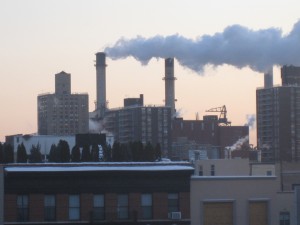The E.P.A issued its first ever standards on mercury pollution from coal and oil-burning power plants yesterday, and the topic was the subject of a fervid debate on KQED's Forum this morning.
Just about the only thing Michael Brune, of the Sierra Club, and Scott Segal, of the Electric Reliability Coordinating Council, could agree on was that mercury is, indeed, a neurotoxin, a poison that causes reproductive and developmental disorders, including lower IQs. But whether the new standards will net the public health and environmental benefits the EPA claims was in dispute.
The EPA's new standards seek to reduce not just mercury but also other toxic air pollutants such as arsenic, acid gas, nickel, selenium, and cyanide.
In a statement, the EPA reported "the new safeguards will prevent as many as 11,000 premature deaths and 4,700 heart attacks a year. The standards will also help America’s children grow up healthier – preventing 130,000 cases of childhood asthma symptoms and about 6,300 fewer cases of acute bronchitis among children each year."
On Forum this morning Segal argued these public health pluses aren't coming from mercury reductions. Instead they're the result of co-benefits detailed on State of Health last month. The public health improvements, Segal said, come from getting particulate matter, otherwise known as soot, out of the air. And that's already happening, he insisted.
